|
Puerto Rican Tanager Nesospingus speculiferus Llorosa,
|
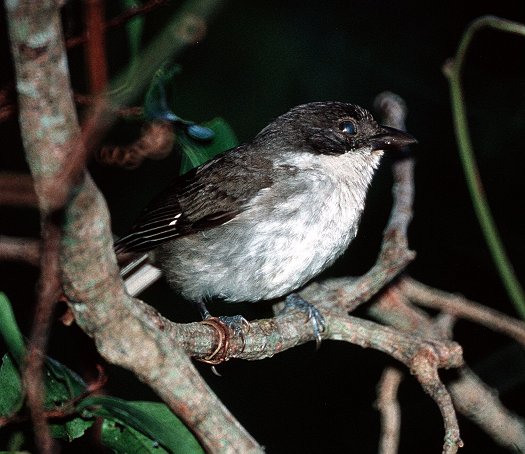 |
|
Photo: M .Oberle
|
|
Puerto Rican Tanager Nesospingus speculiferus Llorosa,
|
 |
|
Photo: M .Oberle
|
|
IDENTIFICATION: A noisy forest bird with an olive-brown back, darker on top of the head. Its underparts are dull white, with light gray streaking. The adult has a small, square, white wing patch. Immature birds lack the wing patch and have darker undersides. Length: 16-20 cm.; weight: 35-36 g. VOICE: A harsh, reedy "seep" note, given frequently as it forages in small flocks; in the breeding season it has a faint, warbling song. Audio (M. Oberle). HABITAT: Mountain forests, shade coffee plantations, and gardens at higher elevations. HABITS: Travels in pairs or small groups rapidly foraging in bushes and trees for insects (moths, caterpillars, beetles, grasshoppers, ants), spiders, snails, and lizards. It uses a nearby branch as a perch from which to pluck fruits. About 40% of the diet in one study was fruit and some seeds. The tanager is quite active, but often difficult to see in thick vegetation. The tanager roosts at night in large noisy flocks in bamboo or palm trees. Puerto Rican Tanagers have been observed "anting," a behavior in many species in which a bird will rub ants on its feathers or allow ants to crawl over its body. Birds are presumed "to ant" to take advantage of formic acid or other secretions of ants to kill parasites, fungi, or bacteria on the birds’ feathers or skin. This tanager defends a territory during the breeding season from January to July. It builds its cup-shaped nest in a vine tangle far out on a tree limb, about 2-10 meters above the ground. The nest is made of leaves, roots, vines and strands of fungus, lined with strips of palm leaves, and contains 2-3 white or cream-colored eggs with brown spots. After breeding, the Tanager joins mixed-species flocks. In Puerto Rico mixed-species flocks average 5-6 species of birds, with the Puerto Rican Tanager often being an important ringleader. The tanager uses unique call notes to communicate with other species in the flock. The human observer can attract it by making squeaking or pishing noises. STATUS AND CONSERVATION: Common at higher elevations. In the early part of the 20th Century, it was restricted to mountain ranges at just a few locations such as Maricao, Toro Negro, and Carite State Forests; Caribbean National Forest (El Yunque), and near Cidra. This spotty distribution is perhaps related to the almost total deforestation of Puerto Rico in the late 19th Century, and reflected the few refugia where isolated populations survived a century ago in coffee plantations or high ridgetop forest fragments. More recently, this species has expanded into other suitable habitat, such as near Comerío, Aibonito, Barranquitas, Adjuntas, and the haystack hills above Ciales. RANGE: Endemic to Puerto Rico. Regular locations to find this species are the forested trail around Parador Hacienda Juanita near Maricao, or along PR 191 above the El Portal visitor center in El Yunque. TAXONOMY: PASSERIFORMES; THRAUPIDAE. This bird belongs to an endemic genus and species found only on Puerto Rico. In fact Nesospingus is the only bird genus endemic to Puerto Rico. |
|
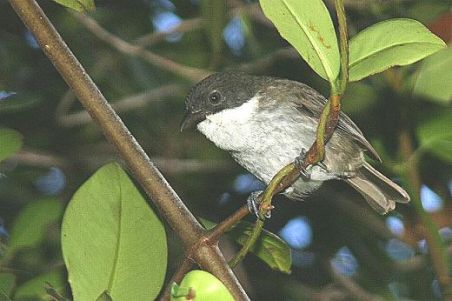 |
|
Photo: A. Sánchez Muñoz
|
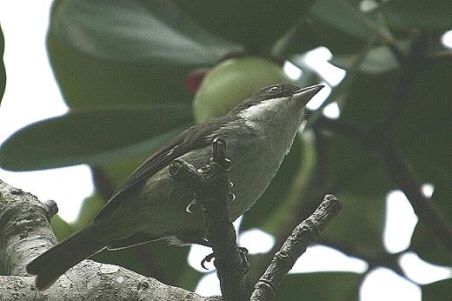 |
|
Photo: A. Sánchez Muñoz
|
 |
|
Photo: A. Iñigo
|
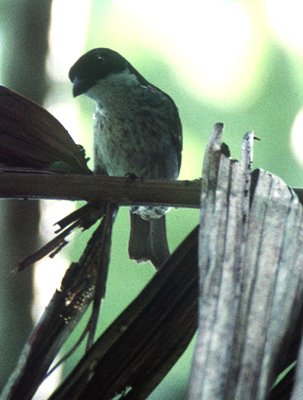 |
|
|
Photo: G. Beaton
|
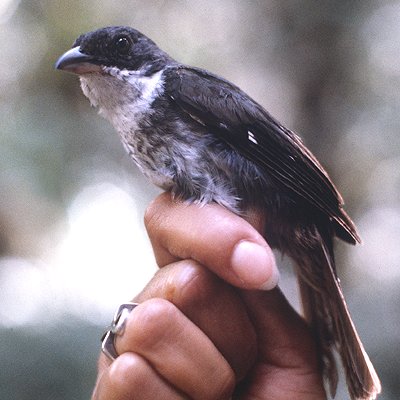 |
|
|
Photo: W. Arendt*
|
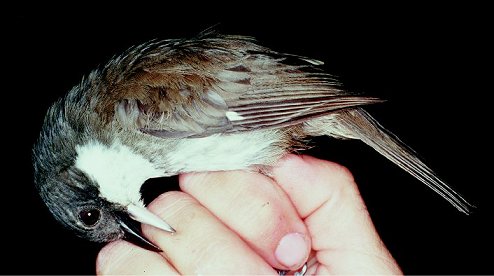 |
|
|
Photo: L. Miranda*
|
|
References Carlo, T. A. and F. J. Vilella. 1992. Ecology of mixed species flocks in cordillera forest of Puerto Rico: participation of neotropical land bird migrants. El Pitirre 5(3):6. Carlo, T. 1999. Alimentación de las aves terrestres de Puerto Rico. El Bien-te-veo 2(2):2. Carlo, T. A., Collazo, J. A., and M. J. Groom. 2003. Avian fruit preferences across a Puerto Rican forested landscape: pattern consistency and implications for seed removal. Oecologia 134:119-131. Cruz, A. 1987. Avian community organization in a mahogany plantation on a Neotropical island. Carib. J. Sci. 23:286-296. Isler M.L. and P.R. Isler. 1987. The Tanagers: natural history, distribution, and identification. Smithsonian Institution Press, Washington, D.C. King, W.B. and C.B. Kepler. 1970. Active anting in the Puerto Rican Tanager. Auk 87:376-378. Levey, D. J. and C. Martínez del Rio. 2001. It takes guts (and more) to eat fruit: lessons from avian nutritional ecology. Auk. 118(4): 819-831. Pérez-Rivera, R. A. 1993. Notes on breeding of the Puerto Rican Tanager (Nesospingus speculiferus). Carib. J. Sci. 29:262-264. Pérez-Rivera, R. A. 1997. The importance of vertebrates in the diet of tanagers. J. Field Ornithol. 68:178-182. Pérez-Rivera, R. A. 1998. Desplazamiento de Llorosas de Puerto Rico (Nesospingus speculiferus) por el Huracán Georges. El Pitirre 11:93-94. Raffaele, H.A. 1989. A guide to the birds of Puerto Rico and the Virgin Islands. Princeton. Raffaele, H.A. 1989. Una guía a las aves de Puerto Rico y las Islas Vírgenes. Publishing Resources, Inc., Santurce, PR. Raffaele, H.A., J.W. Wiley, O.H. Garrido, A.R. Keith, and J.I. Raffaele. 1998. Guide to the birds of the West Indies. Princeton. Recher, H.F. and J. T. Recher. 1966. A contribution to the knowledge of the avifauna of the Sierra de Luquillo, Puerto Rico. Carib. J. Sci. 6:151-161. Wunderle, J.M., A. Díaz, L. Velasquez, and R. Scharrón. 1987. Forest openings and the distribution of understory birds in a Puerto Rican rainforest. Wilson Bull. 99:22-37. Puerto Rican Tanager, Spanish text Next related species in taxonomic order Previous related species in taxonomic order |
|